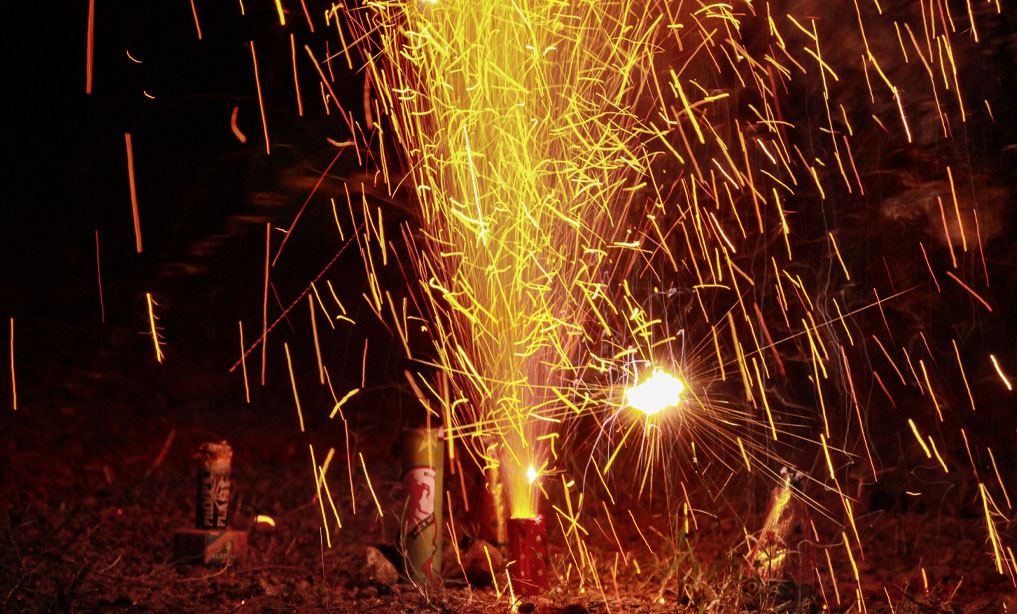AMID relaxed pandemic restrictions, many families are expected to gather and celebrate the holidays with firecrackers and fireworks this year.
But the environment group EcoWaste Coalition said people should not just watch out for injuries caused by firecrackers; they should also guard against the possible harm they could face from the chemicals in these items.
“Aside from the highly publicized injuries to the eyes, hands and other body parts caused by firecrackers and fireworks, these products are packed with chemicals like carbon, potassium nitrate, sulfur and other substances of concern, which can adversely affect the right of every Filipino to a clean and non-toxic environment,” Aileen Lucero, EcoWaste Coalition national coordinator, said in a statement.
Lucero noted that a chemical screening that the group conducted in 2011 showed that firecrackers sold in Manila contained significant quantities of barium, cadmium, chromium, copper, lead, manganese and zinc.
None of the items provided information about the chemicals and their impact on people’s health, she said.
Harmful chemicals
The Department of Health has listed the harmful effects of chemical substances in firecrackers and fireworks.
The DOH said cadmium may irritate the lungs and cause influenza-like symptoms. If it is inhaled, ingested or otherwise enters the body, it could accumulate and damage the liver and kidneys.
An accumulation of cadmium in the bones could also cause the Itai-itai disease, which makes bones brittle and could lead to fractures. Moreover, cadmium is potentially carcinogenic.
In the case of lead, the DOH said it could affect the blood as well as the central nervous system, and could inhibit brain function. Exposure to lead could also result in developmental and learning delays, growth retardation, and behavioral effects.
Chromium could cause skin damage and hypersensitivity, nasal ulcers, and the development of a hole or fissure in the septum. Long term exposure to chromium may also lead to lung cancer, it said.
Aluminum may harm memory and cause dementia and convulsions.
Magnesium, when inhaled as dust or fumes, may irritate the inner linings of the body’s organs or the upper respiratory tract. It may also cause mental fume fever and deterioration of the central nervous system.
Nitrates, nitrite, phosphates and sulfates may lead to dizziness, abdominal cramps, vomiting, bloody diarrhea, weakness and convulsion, said the DOH.
Small repeated doses of these chemicals may also cause weakness, general depression, headache and mental impairment. Phosphates may adversely affect the liver, may cause severe eye damage and may also affect the central nervous system. Sulfates could irritate the skin and mucous membranes and may cause edema of the lungs and weakness in the respiratory muscles.
Carbon monoxide, a colorless, odorless gas, may cause euphoria, headache, eye irritation, narcosis, or a coma. It may also be rapidly fatal if it causes the nervous system and heart to lose oxygen.
Copper dust fumes, when inhaled, may also irritate the respiratory tract.
Manganese dioxide fumes may irritate the lungs, cause pneumonia, possible Parkinsonian symptoms, rigidity, muscular pains, and tremors.
Potassium, another possibly harmful chemical in firecrackers, may lead to inflammation of the lungs or breathing difficulty due to inhaling chemical fumes, as well as an abnormal build up of fluid in the lungs. It may also severely irritate the upper respiratory tract with cough, burns and breathing difficulty.
Sodium may irritate the mucous membranes of the nose, throat and respiratory tract.
The fumes of zinc oxide may cause influenza, chills, fever, sweating, and muscular weakness.
Oxides of nitrogen and sulfur may reduce pulmonary function and irritate the mucous membranes as well. Powerful irritants may also cause respiratory damage.
In the air
The DOH also said fireworks displays increase the levels of suspended particulate matters of carbon monoxide, nitric oxide hydrocarbons, and sulfur dioxide.
“Pregnant women, children and those having a chronic asthma are most vulnerable to these exposures,” it said.
It also said high levels of the suspended particulate matters could cause throat, nose, and eye related problems. These could also lead to headaches and reduced mental acuity, and could cause more severe effects in people with heart, respiratory or nervous system disorders.
Those suffering from cold allergies or cough could experience throat and chest congestion.
Noise level
Aside from the chemicals, the noise produced by fireworks and firecrackers could also cause harm.
The DOH said the standard noise level set by the Department of Environment and Natural Resources for the ambient environment is 60 decibels during daytime and 50 decibels during night time.
But fireworks could exceed 140 decibels, and any noise above 85 decibels could damage hearing, it said.
It further said the increase in the sound levels could lead to restlessness, temporary or permanent hearing loss, high blood pressure, and sleep disturbance.
Annual safety campaign
The EcoWaste Coalition has started its annual “Iwas Paputoxic” campaign where it identifies hazardous substances of concern in fireworks and firecrackers and warns of their adverse effects.
The campaign is intended to help the government’s own drive that seeks to raise awareness about the dangers posed by firecrackers and fireworks.
After all, nobody wants to come to any harm especially during the holiday season.
How useful was this post?
Click on a star to rate it!
Average rating 0 / 5. Vote count: 0
No votes so far! Be the first to rate this post.
We are sorry that this post was not useful for you!
Let us improve this post!
Tell us how we can improve this post?








